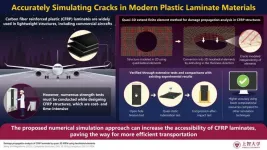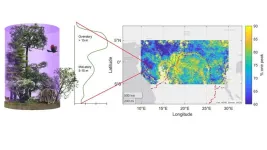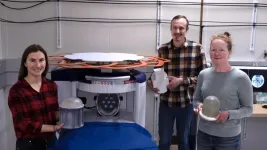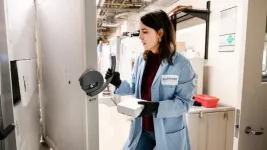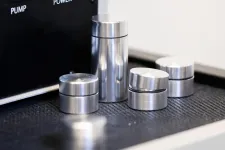Structural materials with useful mechanical properties have applications in a diverse range of fields. A reliable way to enhance the properties of structural materials is to make them lighter without compromising their strength. Carbon fiber reinforced plastics (CFRPs) are perhaps the most prominent example of this approach. These plastics are made up of tiny, yet extremely strong threads of carbon atoms held together by a plastic matrix. Owing to their low weight, high durability, and exceptional mechanical performance, CFRP laminates are being incorporated into state-of-the-art aerospace applications, transportation, and construction. However, designing CFRP laminates can be a very time-consuming endeavor. Engineers must run multiple strength tests to benchmark CFRP specimens whenever they adjust a given design. This drives up the cost of the final product and hinders the applications of CFRPs in a wider range of fields.
Against this backdrop, a duo of researchers, Dr. Chenyu Wang, a former PhD student at the Graduate School of Sophia University, and Professor Toshio Nagashima from Sophia University, developed a novel method to conduct numerical simulations of damage propagation in CFRP laminates. Their findings were published online in volume 316 of the journal Composite Structures, on April 13, 2023.
The researcher duo based their approach on a quasi-3D version of the extend finite element method (XFEM). In FEM, a structure or material is divided into small sub-regions known as elements, followed by the solving of physical equations for each element, to determine the overall response of the system. The ‘extend’ version, which has been used in this study, adds functions that capture local effects around discontinuities, enabling more accurate modeling of damage propagation in form of crack growth.
Notably, since CFRP laminates are made of stacked layers of material, modeling them as flat planes (2-dimensional or 2D) would fail to capture anomalies such as delamination. In contrast, a 3-dimensional (3D) FEM simulation would be computationally intensive and complex to set up. To overcome these issues, the researchers took a balanced approach. They first modeled the desired CFRP laminate as a 2D structure composed of quadrilateral finite elements and marked the position where cracks might occur. Then, they projected this structure in the thickness direction, while the models used to simulate delamination and matrix crack were automatically generated through their simulation system. This strategy made the computations manageable and the modeling to simulate CFRP damage more easily and efficiently.
To verify the validity of their approach, the researchers ran simulations of three different strength and damage propagation tests on CFRP laminates and compared their results with the experimental data reported in other studies. The first was an open-hole tension test, in which a CFRP laminate with a circular hole in the middle was pulled from one end while the other end was anchored. The second was a quasi-static indentation (QSI) test, where a hard semi-sphere was pressed slowly and steadily against a CFRP laminate. Lastly, the third test was the compression-after-impact test, in which the damaged specimens from the QSI test were subjected to a compressive force to assess their integrity and damage tolerance.
Overall, the results of the proposed simulation method agreed well with the experimental data, outperforming the existing quasi-3D XFEM-based techniques. Confident about the potential of the novel approach, Dr. Wang remarks: “The applications of composite materials such as CFRP will become more extensive and efficient if the results of this study are utilized in related fields.”
The widespread adoption of CFRPs is also likely to have important ecological implications. “In the future, if the damage of composite materials can be predicted more efficiently and accurately via numerical simulations, their cost will decrease. If these lightweight and high-strength materials are further applied in transportation, it will have a positive impact on energy savings and environmental protection,” adds Dr. Wang.
If commercial aircrafts could lower their fuel consumption and time taken for design by incorporating CFRPs, the cost of flying could significantly reduce. Let us hope that these findings help us all reap the benefits of CFRPs!
Reference
【Title of original paper】
Damage propagation analysis of CFRP laminate by quasi-3D XFEM using hexahedral elements
【Journal】
Composite Structures
【DOI】
10.1016/j.compstruct.2023.117024
【Authors】
Chenyu Wang1 and Toshio Nagashima2
【Affiliations】
1Graduate School of Sophia University, 2Sophia University
About Sophia University
Established as a private Jesuit affiliated university in 1913, Sophia University is one of the most prestigious universities located in the heart of Tokyo, Japan. Imparting education through 29 departments in nine faculties and 25 majors in 10 graduate schools, Sophia hosts more than 13,000 students from around the world.
Conceived with the spirit of “For Others, With Others,” Sophia University truly values internationality and neighborliness, and believes in education and research that go beyond national, linguistic, and academic boundaries. Sophia emphasizes the need for multidisciplinary and fusion research to find solutions for the most pressing global issues like climate change, poverty, conflict, and violence. Over the course of the last century, Sophia has made dedicated efforts to hone future-ready graduates who can contribute their talents and learnings for the benefit of others and pave the way for a sustainable future while “Bringing the World Together.”
Website: https://www.sophia.ac.jp/eng/
About Dr. Chenyu Wang from the Graduate School of Sophia University
Dr. Chenyu Wang is a former PhD student from the Graduate School of Sophia University in Japan. He currently works in industry with a focus on structure analysis. He has published three research articles on the damage propagation analysis of CFRPs structures with Professor Toshio Nagashima from the Faculty of Science and Technology.
About Professor Toshio Nagashima from Sophia University
Dr. Toshio Nagashima obtained his B.S., M.S., and Ph.D. degrees in Engineering from the University of Tokyo in 1985, 1987, and 1999, respectively. He joined Sophia University in 2001, and he has been serving as a Full Professor at the Faculty of Science and Technology there since 2007. His research interests lie in the areas of computational mechanics, fluid-structure interaction problem, fracture mechanics, the stochastic Finite Element Method (FEM), and parallel computing. He was involved in the development of the extended FEM method for solving fracture problems of metal and composite structures. Dr. Nagashima has published over 50 papers, conducted several joint industry projects during the last 25 years, and been cited by researchers globally.
Funding information
This paper is based on results obtained from a project, JPNP20010, commissioned by the New Energy and Industrial Technology Development Organization (NEDO).
END
